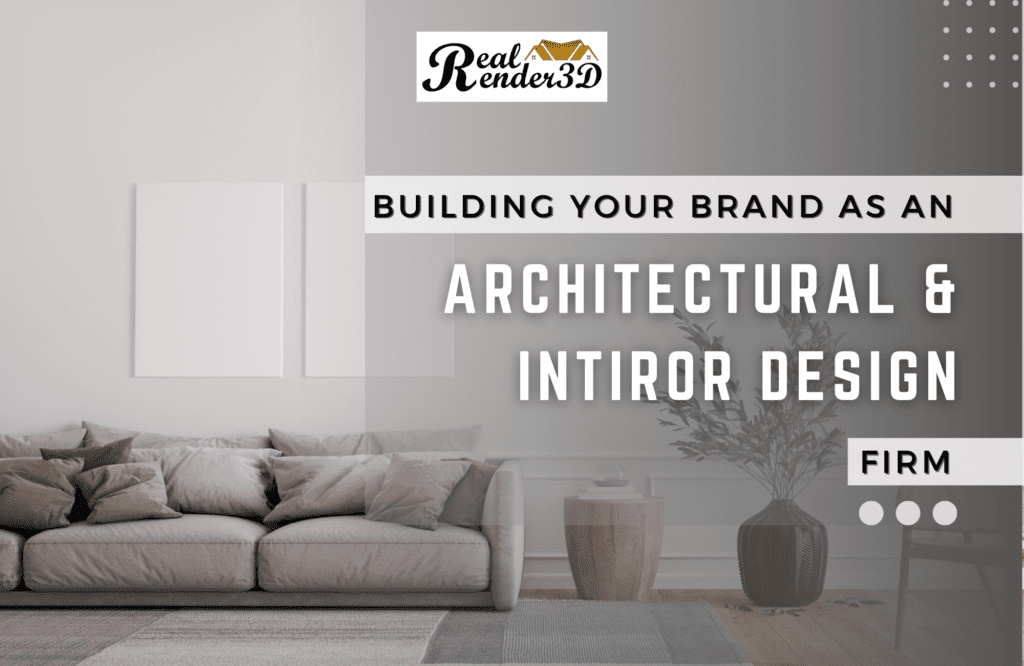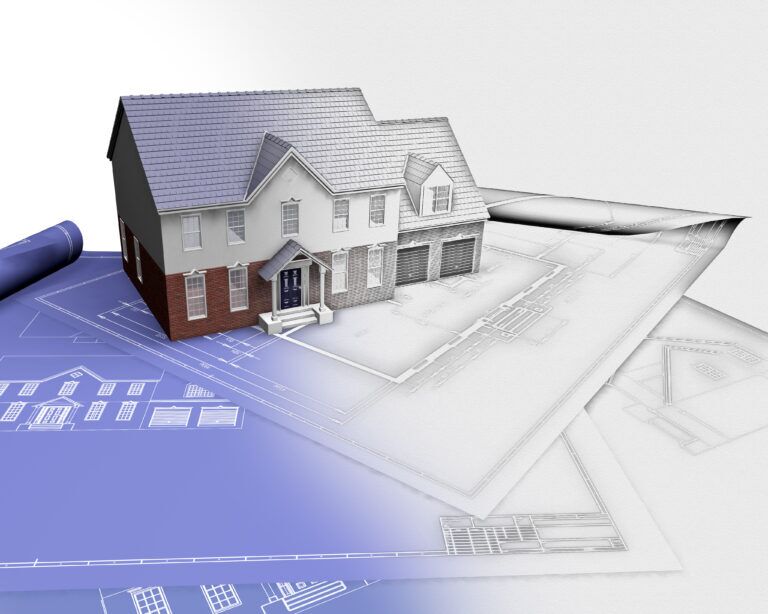As an interior designer or an architectural firm, creating a strong brand identity is essential to standing out in a competitive industry and attracting potential clients. Building a brand for your interior design firm involves more than creating a logo or choosing a colour scheme. It is about crafting a unique identity that resonates with your target audience and reflects the values and services of your business.
This article will take you through the four essential steps to building a strong brand identity for your interior design firm. From defining your target audience and developing a business plan to leveraging social media and building word-of-mouth referrals, we will show you how to establish a brand that sets you apart and attracts the design projects and clients you want and some examples of brands that are already winning in the game
Four Steps To Follow To Build Your Brand
Whether you are just starting an interior design business or looking to take your current business to the next level, these steps will help you establish a powerful brand identity that drives your success.
Step 1: Define Your Brand Identity
Defining your brand identity is the first step in building your brand as an interior design firm. Your brand identity is the image that you want to project to your potential clients. It includes your company name, logo, brand colours, and messaging.
To define your brand identity, you need to start by identifying and defining who your target audience should be. You need to ask yourself, such as who the potential clients are and as well as what their needs and preferences are. Once you clearly understand your target audience, you can create a brand identity that resonates with them.
Your brand identity should be consistent across all platforms, including your website, social media, and marketing materials. This consistency will help you build brand recognition and increase the effectiveness of your marketing efforts.
Examples of successful interior design companies that convey their brand identity through logo branding include Julia kendell Design and Penman Interiors.
This Penman Interiors logo communicates vintage and simplicity with a touch of elegance. The design philosophy of the logo communicates a brand that has mastered creating timeless spaces with a love to mix colours and textures.
This logo from Julia Kendell with its minimalist and modern look conveys a brand that is versatile and minimalist with a lasting impression and appeal.
Step 2: Develop a Business Plan
Developing a business plan is the second step in building your design brand. A business plan is a roadmap that outlines your goals, strategies, and tactics. It helps you stay focused and accountable as you build your brand.
Marketing strategies are also a critical component of your business plan. You should identify the channels through which you will promote your services, such as social media, email marketing, or word-of-mouth referrals. Additionally, your plan should outline your marketing and advertising budget and the metrics you will use to measure the success of your campaigns.
Financial projections should be another critical component that you should include in your business plan. You should create a detailed budget that includes all your expenses, from rent and utilities to salaries and materials. You should also project your revenue based on your target audience and market analysis. Creating realistic financial projections ensures that your interior design firm is financially sustainable and profitable in the long run.
Another important aspect of your business that should not lack in your business plan is the timelines for achieving your goals. These will help you stay on track and measure your progress over time. Setting milestones and deadlines allows you to hold yourself accountable and ensure that your brand-building efforts align with your business strategy.
Consider these marketing tricks some major brands use to grow your brand quickly.
- Advertise your business
Assist your business by advertising directly to potential customers actively seeking your services. Utilising tools such as Google Ads, Facebook Ads, and a Houzz Pro profile can help you attract local clients seeking specialised interior design or architectural services.
- Build your SEO
Even though advertising can generate quick traction on Google, search engine optimisation (SEO) is a sustainable long-term strategy that produces results long after your initial investment of time and money. Strengthening the reputation of your website and brand in Google search results is crucial for the success of any business.
You can optimize your website too just like we did and got the rank on the first page of Google search with the keyword 3d rendering services.
Step 3: Leverage social media
Social media has transformed the way interior design firms build their brand. With millions of users engaging with content daily, social media has become a powerful tool for marketing and branding. By leveraging social media effectively, firms, including startups, can easily connect with potential clients and showcase their design expertise to a larger audience.
As an architectural and interior design startup, you must identify which platforms your target audience uses most frequently. For instance, if your target audience is millennials, Instagram and TikTok might be the best platforms to focus on. Once you have identified the platforms, you can create a content strategy that aligns with your brand identity and resonates with your audience. This could include showcasing your design projects, sharing industry insights, and engaging with your followers through contests and giveaways.
In addition to creating engaging content, it is also important to maintain a consistent brand voice and aesthetic across all platforms and keep your audience updated on the projects you’re currently working on by posting the initial 3D architectural renderings. This helps establish brand recognition and ensures your target audience knows what to expect from your firm. By strategically utilising social media, you can build a strong online presence, connect with potential clients, and grow your brand.
Some examples of social media handles that leverage the power of social media by maintaining consistency include:
This Instagram account of Emily Henderson shows how she has consistently created a brand by highlighting her projects in the highlights section and pinning other important posts on top. Additionally, Emily has organised her Instagram feed very well with a combination of posts and reels.
𝐂𝐨𝐫𝐞𝐲 𝐃𝐚𝐦𝐞𝐧 𝐉𝐞𝐧𝐤𝐢𝐧𝐬 Instagram handle is another good example and reflects how to organise your Instagram feed. Corey has built his portfolio, press coverages, events, etc., all in the highlights section and pinned his Interior Designer of The Year award at the 33rd Annual ARTS Awards on top of his feed. So whenever someone visits his profile, they can view Corey’s portfolio, achievements and recent work, which builds trust, authority, and an identity for his brand.
Ashley Whittaker’s Instagram handle is another great example of how you can build your social media profiles to communicate your brand to potential customers uniquely yet effectively. Ashley’s Instagram account is well organised with beautiful photos of her designs, events and her journey in the interior design world making customers feel like they know her even before they have met her or engaged her brand. This has helped build the target audience’s trust and command of the brand.
Step 4: Cultivate Word-of-Mouth Referrals
As an architectural firm, your reputation is everything, and word-of-mouth referrals can play a significant role in building your brand. While digital marketing can be a powerful tool, there is still something special about hearing a positive review from a satisfied client. Therefore, focusing on providing exceptional design services and exceeding your client’s expectations is crucial.
To cultivate word-of-mouth referrals, start by creating a positive client experience. Ensure you deliver high-quality work and always strive to go above and beyond to meet your client’s needs. Providing excellent customer service, being responsive and communicative, and listening carefully to your client’s feedback are all key components of creating a positive experience.
You could also use incentives to encourage word-of-mouth marketing. Consider offering referral discounts or other incentives to clients who refer their friends and family to your firm. This can incentivise referrals and create a sense of goodwill and appreciation among your clients. Remember that word-of-mouth is the easiest way to build an extremely loyal client base, provided you consistently deliver exceptional services.
Some successful designs that have attracted customers across the UK include:
Project link:https://www.yellowlondon.com/belgravia
This gloriously bright, with creatively clashing patterns by Yellow London, has attracted many customers who have not failed to come with their friends to get advice.
Project link: https://www.studiopeake.com/parsons-green
This project by Studio Peake creates model rooms so they feel as if they’ve been built up organically over time to create a 3D architectural visualisation of the client’s personality. It has been an instant sensation for many clients who have brought in new customers.
Article link: https://www.elledecoration.co.uk/decorating/a37375131/elicyon/
This exquisite design by Elicyon evokes a feeling of exquisite interior coutre, which has attracted many customers who want to feel the dream of their home.
Conclusion
Building your brand as an architectural and interior design firm is a journey that requires patience, persistence, and dedication. By defining your brand identity, developing a business plan, leveraging social media, and cultivating word-of-mouth referrals, you can build a strong brand that attracts potential clients and sets you apart in the design industry.
Frequently Asked Questions
How much does interior design cost?
The interior design cost varies depending on the project scope, size, and location. It can range from a few thousand dollars for a small project to tens of thousands for larger ones.
What does an interior designer do?
An interior designer plans and designs functional and aesthetically pleasing indoor spaces by selecting and arranging decorative elements, colours, furniture, and lighting.
Can you work with my budget?
Yes, we can work with your budget to create a cost-effective design.
What should I bring to our first meeting?
Bring any relevant inspiration or ideas, measurements or floor plans of the space, and your budget.
How long does the 3D design process take?
The duration of the 3D design process varies depending on the project’s complexity and size.
Why do I need to hire an interior design firm?
Hiring an interior design firm can help you create a functional, cohesive, and aesthetically pleasing space while saving time and avoiding costly mistakes.
Looking for 3D Renderings with Photorealistic Environment?
Alex Smith is a content writer at RealRender3D, writing informative articles on 3D rendering, interior design, architecture, and related topics.
With over 15 years of experience at top UK architecture and interior design firms, Alex leverages his expertise to write engaging content educating readers on AEC industry trends and best practices.
Connect with Alex at alex@realrender3d.co.uk.

